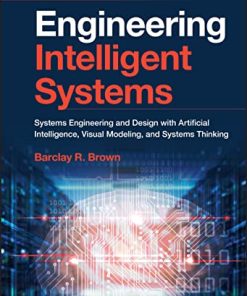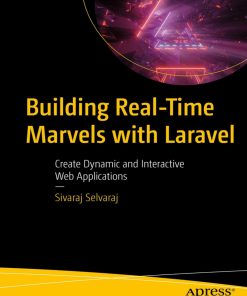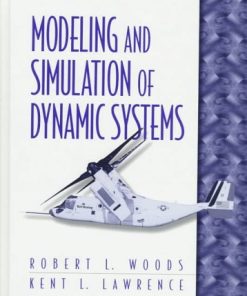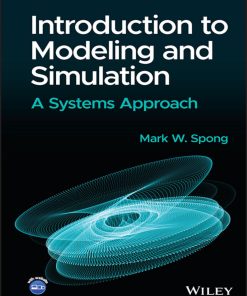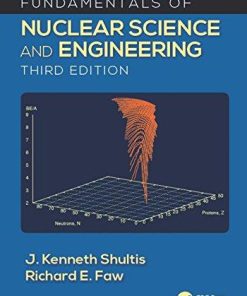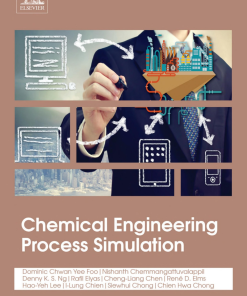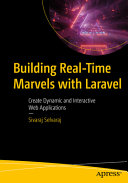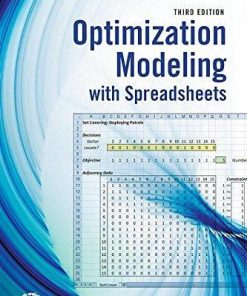Biological Reaction Engineering Dynamic Modeling Fundamentals with 80 Interactive Simulation Examples 3rd Edition by Elmar Heinzle, Irving Dunn, John Ingham, Jiří Přenosil 3527824421 9783527824427
$50.00 Original price was: $50.00.$25.00Current price is: $25.00.
Biological Reaction Engineering: Dynamic Modeling Fundamentals with 80 Interactive Simulation Examples 3rd Edition by Elmar Heinzle, Irving J. Dunn, John Ingham, Jiří E. Přenosil – Ebook PDF Instant Download/DeliveryISBN: 3527824421, 9783527824427
Full download Biological Reaction Engineering: Dynamic Modeling Fundamentals with 80 Interactive Simulation Examples 3rd Edition after payment.

Product details:
ISBN-10 : 3527824421
ISBN-13 : 9783527824427
Author : Elmar Heinzle, Irving J. Dunn, John Ingham, Jiří E. Přenosil
This practical book presents the modeling of dynamic biological engineering processes in a readily comprehensible manner, using the unique combination of simplified fundamental theory and direct hands-on computer simulation. The mathematics is kept to a minimum, and yet the 60 examples illustrate almost every aspect of biological engineering science, with each one described in detail, including the model equations. The programs are written in the modern user-friendly simulation language Berkeley Madonna, which can be run on both Windows PC and Power-Macintosh computers. Madonna solves models comprising many ordinary differential equations using very simple programming, including arrays. It is so powerful that the model parameters may be defined as “sliders”, which allow the effect of their change on the model behavior to be seen almost immediately. Data may be included for curve fitting, and sensitivity or multiple runs may be performed. The results can be viewed simultaneously on multiple-graph windows or by using overlays. The examples can be varied to fit any real situation, and the suggested exercises provide practical guidance. The extensive teaching experience of the authors is reflected in this well-balanced presentation, which is suitable for the teacher, student, biochemist or the engineer.
Biological Reaction Engineering: Dynamic Modeling Fundamentals with 80 Interactive Simulation Examples 3rd Table of contents:
Part I: Principles of Bioreactor Modeling
1 Modeling Principles
1.1 Fundamentals of Modeling
1.2 Development and Meaning of Dynamic Differential Balances
1.3 Formulation of Mass Balance Equations
1.4 Additional Relationships
1.5 Thermodynamics and Equilibrium Relationships
1.6 Energy Balancing for Bioreactors
1.7 Time Constants
2 Basic Bioreactor Concepts
2.1 Information for Bioreactor Modeling
2.2 Bioreactor Operation
3 Biological Kinetics
3.1 Enzyme Kinetics
3.2 Simple Microbial Kinetics
3.3 Interacting (Micro‐)organisms
3.4 Structured Kinetic Models
4 Basic Bioreactor Modeling
4.1 General Balances for Tank‐type Biological Reactors
4.2 Modeling Tubular Plug Flow Bioreactors
5 Mass Transfer
5.1 Mass Transfer in Biological Reactors
5.2 Interphase Gas–Liquid Mass Transfer
5.3 General Oxygen Balances for Gas–Liquid Transfer
5.4 Models for Oxygen Transfer in Large‐scale Bioreactors
6 Diffusion and Biological Reaction in Immobilized Biocatalyst Systems
6.1 External Mass Transfer
6.2 Internal Diffusion and Reaction Within Biocatalysts
7 Automatic Bioprocess Control Fundamentals
7.1 Elements of Feedback Control
7.2 Measurement of Process Variables
7.3 Types of Controller Action
7.4 Controller Tuning
7.5 Advanced Control Strategies
7.6 Application Strategies of Bioprocess Control
8 Basic Cell and Bioreactor Models
8.1 Basic Cell Balances
8.2 The Link of the Cell Balances to a Bioreactor
8.3 Organism Modeling
References Part I and Recommended Textbooks and References for Further Reading
References Cited in Part I
Recommended Textbooks and References for Further Reading
Biochemical Engineering
Bioreactor Design and Modeling
Enzyme Engineering and Kinetics
Metabolic Engineering
Chemical Reaction Engineering
Modeling and Simulation
Dynamics and Control
Biocatalysis
Physiological Modeling
Part II: Dynamic Bioprocess Modeling and Simulation Examples Using the Berkeley Madonna Simulation Language
9 Dynamic Bioprocess Modeling Examples
9.1 Modeling a Roman Fountain
9.2 Modeling a Lake
9.3 Modeling a Mammalian Cell Recirculation Reactor with External Aeration
9.4 Modeling Protein Synthesis and Secretion in a Eukaryotic Cell
9.5 Modeling a Liver Sinusoid
10 Simulation Examples of Biological Reaction Processes Using Berkeley Madonna
10.1 Introductory Simulation Examples
10.1.1 Batch Fermentation (BATFERM)
Nomenclature
Exercises
10.1.2 Chemostat Fermentation (CHEMO)
Nomenclature
Exercises
10.1.3 Fed‐batch Fermentation (FEDBAT)
Nomenclature
Exercises
10.1.4 Introductory Exercises in Bioreactor Model Building
10.2 Batch Reactors
10.2.1 Kinetics of Enzyme Action (MMKINET)
Nomenclature
Exercises
10.2.2. Lineweaver–Burk Plot (LINEWEAV)
Nomenclature
Exercises
10.2.3 Oligosaccharide Production in Enzymatic Lactose Hydrolysis (OLIGO)
Nomenclature
Exercises
Reference
10.2.4 Batch Heat Sterilization (BATSTER)
Nomenclature
Exercises
References
10.2.5 Growth of the Coronavirus (CORONADYN)
Nomenclature
Exercises
10.3 Fed‐batch Reactors
10.3.1 Variable Volume Fermentation (VARVOL and VARVOLD)
Nomenclature
Exercises
References
10.3.2. Penicillin Fermentation Using Elemental Balancing (PENFERM)
Nomenclature
Exercises
Reference
10.3.3. Ethanol Fed‐batch Diauxic Fermentation (ETHFERM)
Nomenclature
Exercises
Reference
10.3.4. Repeated Fed‐batch Culture (REPFED)
Nomenclature
Exercises
Reference
10.3.5. Repeated Medium Replacement Culture (REPLCUL)
Nomenclature
Exercises
10.3.6. Penicillin Production in a Fed‐batch Fermenter (PENOXY)
Nomenclature
Exercises
References
10.4 Continuous Reactors
10.4.1 Steady‐state Chemostat (CHEMOSTA)
Nomenclature
Exercises
10.4.2. Continuous Culture with Inhibitory Substrate (CONINHIB)
Nomenclature
Exercises
Reference
10.4.3. Nitrification in Activated Sludge Process (ACTNITR)
Nomenclature
Exercises
10.4.4. Tubular Enzyme Reactor (ENZTUBE)
Nomenclature
Exercises
10.4.5. Dual Substrate Limitation (DUAL)
Nomenclature
Exercises
Reference
10.4.6. Two‐stage Chemostat with Additional Stream (TWOSTAGE)
Nomenclature
Exercises
10.4.7. Two‐stage Culture with Product Inhibition (STAGED)
Nomenclature
Exercises
10.4.8. Fluidized Bed Recycle Reactor (FBR)
Nomenclature
Exercises
10.4.9. Nitrification in a Fluidized Bed Reactor (NITBED)
Nomenclature
Exercises
Reference
10.4.10. Continuous Enzymatic Reactor (ENZCON)
Nomenclature
Exercises
10.4.11. Reactor Cascade with Deactivating Enzyme (DEACTENZ)
Nomenclature
Exercises
References
10.4.12. Continuous Production of PHB in a Two‐tank Reactor Process (PHBTWO)
Nomenclature
Exercises
10.4.13. Dichloromethane in a Biofilm Fluidized Sand Bed (DCMDEG)
Nomenclature
Exercises
References
10.5 Oxygen Uptake Systems
10.5.1 Aeration of a Tank Reactor for Enzymatic Oxidation (OXENZ)
Nomenclature
Exercises
10.5.2. Gas and Liquid Oxygen Dynamics in a Continuous Fermenter (INHIB)
Nomenclature
Exercises
10.5.3. Batch Nitrification with Oxygen Transfer (NITRIF)
Nomenclature
Exercises
Reference
10.5.4. Oxygen Uptake and Aeration Dynamics (OXDYN)
Nomenclature
Exercises
10.5.5. KLADYN, KLAFIT, and ELECTFIT: Dynamic Oxygen Electrode Method for KLa
Nomenclature
Exercises
References
10.5.6. Biofiltration Column for Removing Two Inhibitory Substrates (BIOFILTDYN)
Nomenclature
Exercises
Reference
10.5.7. Optical Sensing of Dissolved Oxygen in Microtiter Plates (TITERDYN and TITERBIO)
Nomenclature
Exercises
Reference
10.6 Diffusion Systems
10.6.1 Double Substrate Biofilm Reaction (BIOFILM)
Nomenclature
Exercises
10.6.2. Steady‐state Split Boundary Solution (ENZSPLIT)
Nomenclature
Exercises
10.6.3. Dynamic Porous Diffusion and Reaction (ENZDYN)
Nomenclature
Exercises
Reference
10.6.4. Oxygen Diffusion in Animal Cell Sphere (CELLDIFFBEAD)
Nomenclature
Exercises
References
10.6.5. Oxygen Diffusion to a Single Cell or Cell Aggregate (CELLDIFFCYL)
Nomenclature
Exercises
10.6.6. Immobilized Biofilm in a Nitrification Column System (NITBEDFILM)
Nomenclature
Exercises
Reference
10.7 Controlled Reactors
10.7.1 Feedback Control of a Water Heater (TEMPCONT)
Nomenclature
Exercises
Results
10.7.2. Temperature Control of Fermentation (FERMTEMP)
Nomenclature
Exercises
10.7.3. Turbidostat Response (TURBCON)
Nomenclature
Exercises
10.7.4. Control of a Continuous Bioreactor with Inhibitory Substrate (CONTCON)
Nomenclature
Exercises
References
10.7.5. Adaptive Control of Dissolved Oxygen at Low Levels in Batch Culture (ADAPTOXCONT)
Nomenclature
Exercises
Reference
10.8 Membrane and Cell Retention Reactors
10.8.1 Cell Retention Membrane Reactor (MEMINH)
Nomenclature
Exercises
10.8.2. Fermentation with Pervaporation (PERVAPSUB)
Nomenclature
Reference
10.8.3. Two‐stage Fermentor with Cell Recycle for Continuous Production of Lactic Acid (LACMEMRECYC)
Nomenclature
Exercises
References
10.8.4. Tubular Hollow Fiber Enzyme Reactor Module for Lactose Hydrolysis (LACREACT)
Nomenclature
Exercises
References
10.8.5. Immobilized Animal Cells in a Fluidized Bed Reactor (ANIMALIMMOB)
Nomenclature
Exercises
References
10.9 Multi‐organism Systems
10.9.1 Two Bacteria with Opposite Substrate Preferences (COMMENSA)
Nomenclature
Exercises
References
10.9.2 Competitive Assimilation and Commensalism (COMPASM)
Nomenclature
Exercises
References
10.9.3 Stability of Recombinant Microorganisms (PLASMID)
Nomenclature
Exercises
References
10.9.4. Predator–Prey Population Dynamics (MIXPOP)
Nomenclature
Exercises
10.9.5 Competition Between Organisms (TWOONE)
Nomenclature
Exercises
10.9.6 Competition Between Two Microorganisms for an Inhibitory Substrate in a Biofilm (FILMPOP)
Nomenclature
Exercises
References
10.9.7. Model for Anaerobic Reactor Activity Measurement (ANAEMEAS)
Nomenclature
References
10.9.8 Dynamics of an Epidemic Using the SIR Model (SIRDYN and SIRDYNDIM)
Nomenclature
Exercises
References
10.10 Structured and Metabolic Network Models
Oscillations in Continuous Yeast Culture (YEASTOSC)
Nomenclature
Exercises
Reference
10.10.2 Structured Model for PHB Production (PHB)
Nomenclature
Exercises
Reference
10.10.3 Mammalian Cell Cycle Control (MAMMCELLCYCLE)
Nomenclature
Exercises
Reference
10.10.4 Metabolic Dynamics in Secondary Metabolite Fluxes in Potato Tubers (POTATO)
Nomenclature
Exercises
References
10.10.5 Structured Model of the Production of Acetoin and Butanediol (SUBTILIS)
Nomenclature
Exercises
References
10.10.6 Dynamics of Cultivation of CHO for the Production of Monoclonal Antibodies (CHOMAB)
Nomenclature
Exercises
References
People also search for Biological Reaction Engineering: Dynamic Modeling Fundamentals with 80 Interactive Simulation Examples 3rd:
biological engineering jobs
what is chemical and biological engineering
biological reaction example
biological systems engineering jobs
biological reactions
Tags: Biological Reaction, Engineering, Dynamic Modeling, Fundamentals, 80 Interactive, Elmar Heinzle, Irving Dunn, John Ingham, Jiří Přenosil
You may also like…
Engineering - Engineering Technology
Computers - Web Development
Engineering - Engineering - General & Miscellaneous
Introduction to Modeling and Simulation 1st edition by Mark Spong 1119982906 9781119982906
Computers - Programming
Uncategorized




